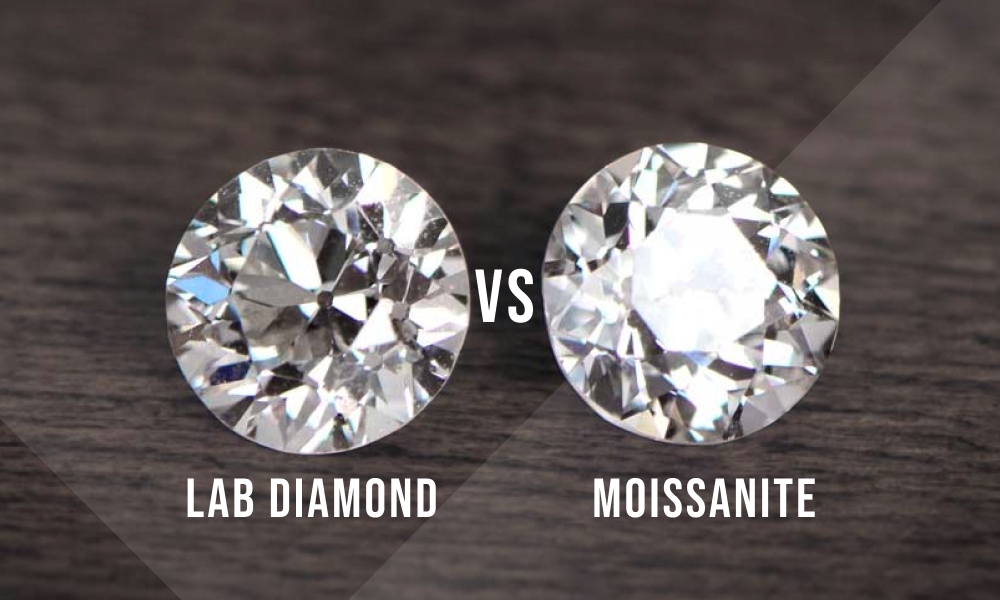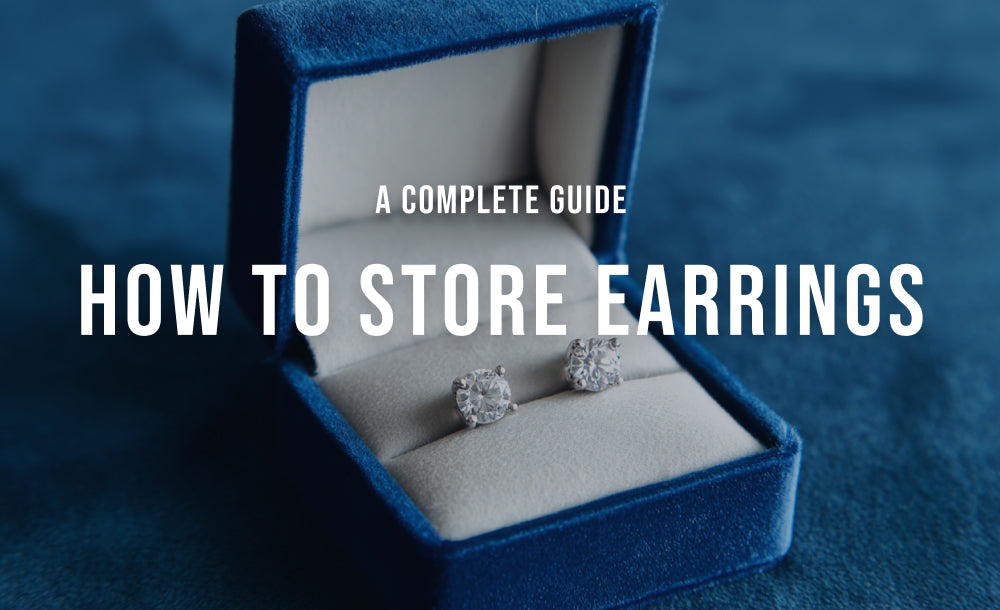Rust is a common problem that can affect the appearance and durability of your jewelry. This form of corrosion occurs when metal reacts with oxygen and moisture, causing jewelry to look dull, dirty, and unattractive over time.
Fortunately, you can restore the shine and beauty of rusted jewelry with some simple household items and basic tools. In this article, we will show you how to clean rusted jewelry and remove stubborn rust buildup. Using gentle cleaning solutions and methods, you can rejuvenate old jewelry to look like new again.
With light scrubbing and some elbow grease, you'll be amazed at how you can renew cherished rings, necklaces, bracelets, and other jewelry pieces. Learn how to banish rust from surfaces and intricate crevices, and bring back the brilliant glimmer to your favorite metal accessories. We'll also provide tips to prevent future rust, so you can maintain the shine and keep your jewelry looking its absolute best.
Why does Rust Form on Jewelry?
Rust can form on any metal that contains iron, such as steel, iron, or brass. Some jewelry metals, such as gold, silver, platinum, or titanium, do not contain iron and are therefore resistant to rust. However, some jewelry may have iron-based alloys or plating that can rust over time.
There are several factors that can contribute to the formation of rust on jewelry, such as:
Moisture and Oxygen
Moisture and oxygen create the conditions for rust. Metal exposed to water or humidity reacts with oxygen, forming iron oxide - the reddish-brown substance we call rust. Moisture sources include sweat, rain, showering, swimming, washing, or spills.
Pollution
Pollution accelerates rusting. Air pollutants react with moisture and metal, forming acids that corrode. Sources include car exhaust, industrial emissions, and cigarette smoke.
Low-quality materials and plating

Low-quality metals rust faster. Cheap metals with high iron content or thin plating wear off easily. Quality metals have low iron and thick plating that protects from rust. That's why most of the people opt for 925 sterling silver jewelry.
Lack of maintenance
Lack of maintenance can also cause your jewelry to rust. If you do not clean your jewelry regularly, dirt, dust, oil, or other substances can accumulate on the surface and create a favorable environment for rust. If you do not store your jewelry properly, it can also be exposed to moisture, oxygen, or pollution that can cause rust.
How to Clean Rusted Jewelry

Don't panic if jewelry rusts. Effective cleaning methods remove rust, and restore shine.
Arrange Necessary Ingredients
Cleaning rusted jewelry requires:
- Baking soda - gentle abrasive removes rust
- White vinegar - dissolves rust, restores color
- Dish soap - removes grease, oils
- Lemon juice - removes rust, brightens
- Salt - gentle abrasive, prevents future rust
Prepare Necessary tools
To clean rusted jewelry, gather these tools:
- Toothbrush: Use a soft, clean toothbrush to reach and remove rust or dirt from the nooks and crannies of your jewelry.
- Container: Soak your jewelry in a small, clean container like a bowl, cup, or jar to clean it thoroughly.
- Soft Cloth: Dry and polish your jewelry with a clean, lint-free cloth such as microfiber, cotton, or a towel.
Make a Baking soda solution
Create a baking soda solution by mixing baking soda and water in a container. The ratio depends on the jewelry amount and rust severity; a common guideline is one tablespoon of baking soda per cup of water. Adjust as needed, ensuring the solution is thick enough to coat your jewelry.
Apply the solution
To clean your jewelry, gently scrub it with a toothbrush dipped in a baking soda solution. Use your fingers for application, avoiding scratches. Ensure thorough coverage, and enhance cleaning by adding lemon juice or salt to the solution.
Let the solution sit
Let the solution sit with your jewelry for 15 to 30 minutes, allowing the baking soda to loosen the rust. Periodically check and scrub your jewelry as needed during this time.
Rinse the jewelry
To rinse the jewelry, you will need to remove your jewelry from the baking soda solution and rinse it with clean water. You can use warm or cold water, but make sure it is not too hot or too cold. You can also use a container or a sink to rinse your jewelry, but make sure it is clean and has a drain. Rinse your jewelry thoroughly and make sure there is no residue left on it.
Soak in White vinegar solution
To soak in the white vinegar solution, you will need to mix some white vinegar and water in a container. The ratio of white vinegar and water depends on the amount of jewelry you want to clean and the severity of the rust. A general rule of thumb is to use one part of white vinegar for every two parts of water. You can adjust the ratio as needed, but make sure the solution is not too strong or too weak.
To soak your jewelry, you will need to place your jewelry in the white vinegar solution and let it sit for about 15 to 30 minutes. This will allow the white vinegar to dissolve the rust and restore the color of your jewelry. You can also check your jewelry periodically and scrub it again if needed.
Dry
To dry your jewelry, you will need to remove your jewelry from the white vinegar solution and dry it with a soft cloth. You can also use a hair dryer or a fan to speed up the drying process, but make sure they are not too hot or too strong. Dry your jewelry gently and make sure there is no moisture left on it.
Polish
To polish your jewelry, you will need to rub your jewelry with a soft cloth until it shines. You can also use a jewelry polish or a jewelry cloth to enhance the shine and protect your jewelry from rust. Polish your jewelry gently and make sure there are no scratches or marks on it.
How to Prevent Your Jewelry from Getting Rusty
To prevent your jewelry from getting rusty, you will need to follow some simple and effective tips, such as:
Regular maintenance
Regular maintenance is the key to keeping your jewelry rust-free. You should clean your jewelry at least once a month or more often if you wear it frequently. You can use the same methods as above or use a mild jewelry cleaner that is suitable for your jewelry. You should also inspect your jewelry regularly and look for any signs of rust or damage. If you notice any rust, you should clean it as soon as possible to prevent it from spreading or worsening.
Storage

Storage is another important factor that can affect the rusting of your jewelry. You should store your jewelry in a cool, dry, and dark place, such as a jewelry box, a drawer, or a pouch. You should also keep your jewelry separate from other metals or materials that can cause rust, such as iron, steel, brass, or leather. You should also avoid storing your jewelry in places that are exposed to moisture, oxygen, or pollution, such as the bathroom, the kitchen, or the car.
Keep away from water
Water is one of the main causes of rust, so you should keep your jewelry away from water as much as possible. You should avoid wearing your jewelry when you shower, swim, wash, or exercise. You should also remove your jewelry before applying any lotion, perfume, or makeup. You should also wipe your jewelry with a soft cloth after wearing it to remove any sweat, moisture, or dirt that may have accumulated on it.
Use gel packs
Gel packs are small packets that contain silica gel, a substance that absorbs moisture and prevents rust. You can place gel packs in your jewelry box, drawer, pouch, or any other place where you store your jewelry. Gel packs can help reduce the humidity and prevent your jewelry from rusting. You can buy gel packs online or in stores, or you can reuse the ones that come with some products, such as shoes, electronics, or food. You should replace the gel packs every few months or when they become saturated with moisture.
Conclusion
With the simple tips outlined here, you can banish rust and revive the brilliance of your beloved jewelry. Remember to clean pieces regularly and properly store them to prevent future tarnish. For severely rusted items, enlist a jeweler's help or invest in new anti-rust jewelry made of durable metals like gold, silver, or titanium.
Caring for your cherished rings, necklaces, and more doesn't need to be difficult. A little TLC and elbow grease can go a long way in keeping your accessories looking beautiful for years to come. Treat your jewelry with love and it will continue sparkling just like new.
If you found these cleaning and care methods useful, please share them with other jewelry lovers. Comment below with any extra questions. Thank you for learning how to clean rusted jewelry and keep your precious pieces pristine.



































































